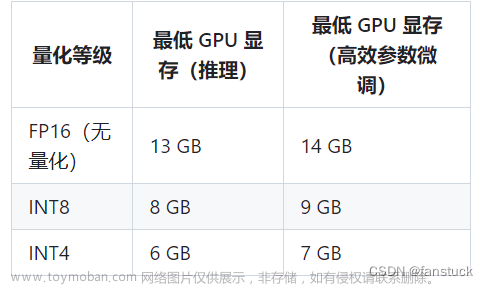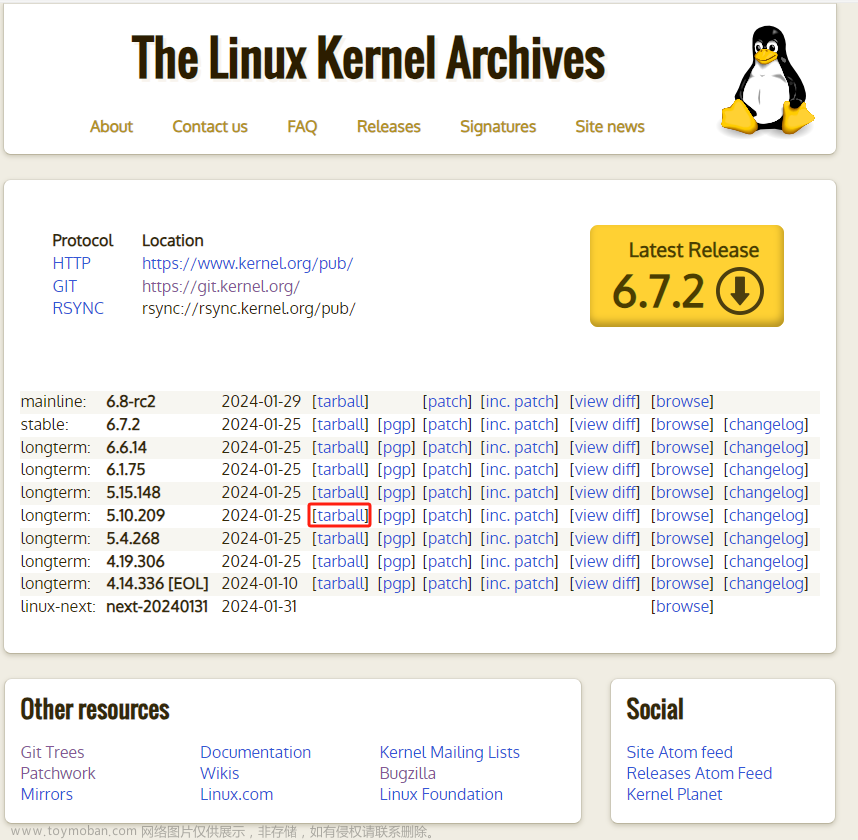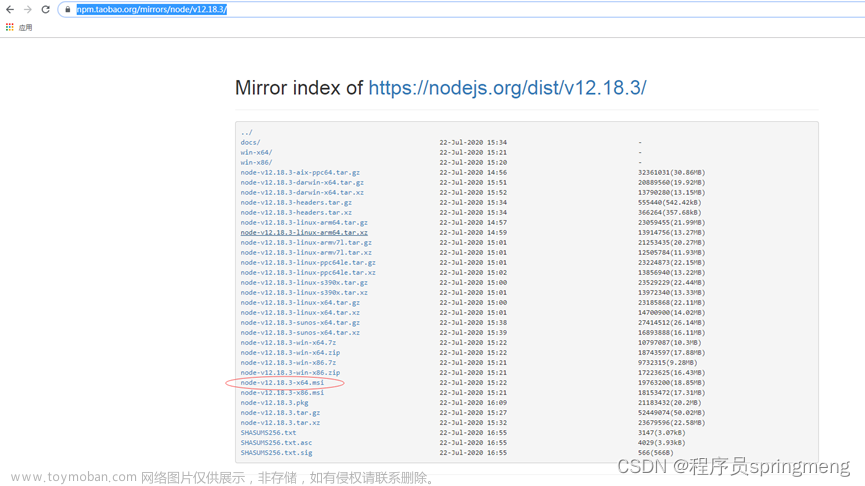SpringCloud Alibaba全集文章目录:
零、手把手教你搭建SpringCloudAlibaba项目
一、手把手教你搭建SpringCloud Alibaba之生产者与消费者
二、手把手教你搭建SpringCloudAlibaba之Nacos服务注册中心
三、手把手教你搭建SpringCloudAlibaba之Nacos服务配置中心
四、手把手教你搭建SpringCloudAlibaba之Nacos服务集群配置
五、手把手教你搭建SpringCloudAlibaba之Nacos服务持久化配置
六、手把手教你搭建SpringCloudAlibaba之Sentinel实现流量实时监控
七、手把手教你搭建SpringCloudAlibaba之Sentinel实现流量控制
八、手把手教你搭建SpringCloudAlibaba之Sentinel服务熔断降级
九、手把手教你搭建SpringCloudAlibaba之Sentinel热点key限流
十、手把手教你搭建SpringCloudAlibaba之Sentinel系统自适应保护
十一、手把手教你搭建SpringCloudAlibaba之Sentinel注解SentinelResource
十二、手把手教你搭建SpringCloudAlibaba之Sentinel规则持久化
十三、手把手教你搭建SpringCloudAlibaba之Seata分布式事务
点击跳转学习 -------------->手把手教你搭建SpringCloud项目
1、直接贴父项目的pom文件
<?xml version="1.0" encoding="UTF-8"?>
<project xmlns="http://maven.apache.org/POM/4.0.0"
xmlns:xsi="http://www.w3.org/2001/XMLSchema-instance"
xsi:schemaLocation="http://maven.apache.org/POM/4.0.0 http://maven.apache.org/xsd/maven-4.0.0.xsd">
<modelVersion>4.0.0</modelVersion>
<groupId>com.study.springcloud</groupId>
<artifactId>springcloud</artifactId>
<!-- 首先修改打包方式 -->
<packaging>pom</packaging>
<version>1.0-SNAPSHOT</version>
<!--引入其他的服务 -->
<modules>
</modules>
<properties>
<project.build.sourceEncoding>UTF-8</project.build.sourceEncoding>
<maven.compiler.source>1.8</maven.compiler.source>
<maven.compiler.target>1.8</maven.compiler.target>
<mysql.version>5.1.47</mysql.version>
<druid.version>1.1.10</druid.version>
<junit.version>4.1.2</junit.version>
<lombok.version>1.16.10</lombok.version>
<log4j.vsrsion>1.2.17</log4j.vsrsion>
</properties>
<!-- 因为是总项目 所以用dependencyManagement来管理 因为其他的子项目就不会来管理版本了了 可以直接引用 -->
<dependencyManagement>
<dependencies>
<!-- springcloud的依赖-->
<dependency>
<groupId>org.springframework.cloud</groupId>
<artifactId>spring-cloud-dependencies</artifactId>
<version>Hoxton.SR1</version>
<type>pom</type>
<scope>import</scope>
</dependency>
<!--spring-cloud-alibaba-->
<dependency>
<groupId>com.alibaba.cloud</groupId>
<artifactId>spring-cloud-alibaba-dependencies</artifactId>
<version>2.1.0.RELEASE</version>
<type>pom</type>
<scope>import</scope>
</dependency>
<!-- springboot的依赖-->
<dependency>
<groupId>org.springframework.boot</groupId>
<artifactId>spring-boot-dependencies</artifactId>
<version>2.2.2.RELEASE</version>
<type>pom</type>
<scope>import</scope>
</dependency>
<!-- 数据库-->
<dependency>
<groupId>mysql</groupId>
<artifactId>mysql-connector-java</artifactId>
<version>${mysql.version}</version>
</dependency>
<dependency>
<groupId>com.alibaba</groupId>
<artifactId>druid</artifactId>
<version>${druid.version}</version>
</dependency>
<!-- springboot启动器-->
<dependency>
<groupId>org.mybatis.spring.boot</groupId>
<artifactId>mybatis-spring-boot-starter</artifactId>
<version>1.3.2</version>
</dependency>
<!--单元测试 -->
<dependency>
<groupId>junit</groupId>
<artifactId>junit</artifactId>
<version>4.12</version>
</dependency>
<!-- lombok-->
<dependency>
<groupId>org.projectlombok</groupId>
<artifactId>lombok</artifactId>
<version>1.18.8</version>
</dependency>
<!-- log4j-->
<dependency>
<groupId>log4j</groupId>
<artifactId>log4j</artifactId>
<version>${log4j.vsrsion}</version>
</dependency>
<dependency>
<groupId>ch.qos.logback</groupId>
<artifactId>logback-core</artifactId>
<version>1.2.3</version>
</dependency>
</dependencies>
</dependencyManagement>
</project>2、新建Module命名为cloud-api-commons,用来存放实体类和公用的类。如下图:

使用到的pom文件:
<?xml version="1.0" encoding="UTF-8"?>
<project xmlns="http://maven.apache.org/POM/4.0.0"
xmlns:xsi="http://www.w3.org/2001/XMLSchema-instance"
xsi:schemaLocation="http://maven.apache.org/POM/4.0.0 http://maven.apache.org/xsd/maven-4.0.0.xsd">
<parent>
<artifactId>springcloud</artifactId>
<groupId>com.study.springcloud</groupId>
<version>1.0-SNAPSHOT</version>
</parent>
<modelVersion>4.0.0</modelVersion>
<artifactId>cloud-api-commons</artifactId>
<dependencies>
<dependency>
<groupId>org.springframework.boot</groupId>
<artifactId>spring-boot-devtools</artifactId>
<scope>runtime</scope>
<optional>true</optional>
</dependency>
<dependency>
<groupId>org.projectlombok</groupId>
<artifactId>lombok</artifactId>
<optional>true</optional>
</dependency>
<!-- 工具包-->
<dependency>
<groupId>cn.hutool</groupId>
<artifactId>hutool-all</artifactId>
<version>5.1.0</version>
</dependency>
</dependencies>
</project>创建生产者实体类Payment
package com.buba.springcloud.pojo;
import lombok.AllArgsConstructor;
import lombok.Data;
import lombok.NoArgsConstructor;
import lombok.experimental.Accessors;
import java.io.Serializable;
@Data
@NoArgsConstructor
@AllArgsConstructor
@Accessors(chain = true)
public class Payment implements Serializable {
private Long id;
// 微服务 一个服务对应一个数据库,同一个信息可能存在不同的数据库
private String serial;
}
为了数据传输的方便,也为了前后端分离项目,我们将返回的数据进行封装,封装成一个实体类。
package com.buba.springcloud.pojo;
import lombok.AllArgsConstructor;
import lombok.Data;
import lombok.NoArgsConstructor;
import lombok.experimental.Accessors;
@Data
@NoArgsConstructor
@AllArgsConstructor
@Accessors(chain = true)
public class CommonResult<T> {
private Integer code;//返回状态码
private String message;//返回是否调用成功
private T data; //返回的数据
public CommonResult(Integer code, String message) {
this(code,message,null);
}
}
我们首先将该工程clean,确保当前工程的maven的配置是否成功。

出现如下界面说明当前工程的maven配置环境没有问题

那接下来我们就开始install打包放到本地库中。如下为成功界面:

此时我们可以看到我们总工程的pom.xml文件成功引入了cloud-api-commons,如下图:

3、新建生产者Module命名为cloud-provide-payment,生产者我们可以这样理解就是我们的服务端,是我们使用代码写的业务逻辑接口,而消费者就是我们用户,用户通过app或者web调用我们生产者服务端的接口,获取信息。我们首先搭建一个专门放我们支付业务的服务,来让其他服务来调用使用。支付服务就是其中的一个生产者。
目录结构如下:

pom文件:
<?xml version="1.0" encoding="UTF-8"?>
<project xmlns="http://maven.apache.org/POM/4.0.0"
xmlns:xsi="http://www.w3.org/2001/XMLSchema-instance"
xsi:schemaLocation="http://maven.apache.org/POM/4.0.0 http://maven.apache.org/xsd/maven-4.0.0.xsd">
<parent>
<artifactId>springcloud</artifactId>
<groupId>com.study.springcloud</groupId>
<version>1.0-SNAPSHOT</version>
</parent>
<modelVersion>4.0.0</modelVersion>
<artifactId>cloud-provide-payment</artifactId>
<dependencies>
<!-- 引入实体Module的包 -->
<dependency>
<groupId>com.study.springcloud</groupId>
<artifactId>cloud-api-commons</artifactId>
<version>${project.version}</version>
</dependency>
<dependency>
<groupId>org.springframework.boot</groupId>
<artifactId>spring-boot-starter-web</artifactId>
</dependency>
<dependency>
<groupId>org.springframework.boot</groupId>
<artifactId>spring-boot-starter-actuator</artifactId>
</dependency>
<dependency>
<groupId>org.mybatis.spring.boot</groupId>
<artifactId>mybatis-spring-boot-starter</artifactId>
</dependency>
<dependency>
<groupId>com.alibaba</groupId>
<artifactId>druid-spring-boot-starter</artifactId>
<version>1.1.10</version>
</dependency>
<!--mysql-connector-java-->
<dependency>
<groupId>mysql</groupId>
<artifactId>mysql-connector-java</artifactId>
</dependency>
<!--jdbc-->
<dependency>
<groupId>org.springframework.boot</groupId>
<artifactId>spring-boot-starter-jdbc</artifactId>
</dependency>
<dependency>
<groupId>org.springframework.boot</groupId>
<artifactId>spring-boot-devtools</artifactId>
<scope>runtime</scope>
<optional>true</optional>
</dependency>
<dependency>
<groupId>org.projectlombok</groupId>
<artifactId>lombok</artifactId>
<optional>true</optional>
</dependency>
<dependency>
<groupId>org.springframework.boot</groupId>
<artifactId>spring-boot-starter-test</artifactId>
<scope>test</scope>
</dependency>
</dependencies>
</project>在resources文件下新建application.yml配置文件
server:
port: 8001 #服务端口
#spring相关配置
spring:
application:
name: mcroservice-payment #服务名
datasource:
type: com.alibaba.druid.pool.DruidDataSource #当前数据源操作类型
driver-class-name: org.gjt.mm.mysql.Driver #数据库驱动包
url: jdbc:mysql://localhost:3306/db01?autoReconnect=true&useUnicode=true&characterEncoding=utf8&zeroDateTimeBehavior=convertToNull&useSSL=false
username: root
password: roo
#mybatis:配置
mybatis:
mapperLocations: classpath:dao/*.xml
type-aliases-package: com.buba.springcloud.pojo # 所有pojo别名类所在包启动类代码
package com.buba.payment;
import org.springframework.boot.SpringApplication;
import org.springframework.boot.autoconfigure.SpringBootApplication;
import org.springframework.cloud.client.discovery.EnableDiscoveryClient;
@SpringBootApplication
public class PayMentMain {
public static void main(String[] args) {
SpringApplication.run(PayMentMain.class,args);
}
}
下面开始写业务,就是三层结构,如下图:

PaymentDao.java代码
package com.buba.payment.dao;
import com.buba.springcloud.pojo.Payment;
import org.apache.ibatis.annotations.Mapper;
import org.apache.ibatis.annotations.Param;
import org.springframework.stereotype.Repository;
@Mapper
@Repository
public interface PaymentDao {
int create(Payment payment);
Payment queryById(@Param("id")long id);
}
PaymentService.java代码
package com.buba.payment.service;
import com.buba.springcloud.pojo.Payment;
import org.apache.ibatis.annotations.Param;
public interface PaymentService {
int create(Payment payment);
Payment queryById(@Param("id")long id);
}
PaymentImple.java代码
package com.buba.payment.serviceImp;
import com.buba.payment.dao.PaymentDao;
import com.buba.payment.service.PaymentService;
import com.buba.springcloud.pojo.Payment;
import org.springframework.beans.factory.annotation.Autowired;
import org.springframework.stereotype.Service;
@Service
public class PaymentImple implements PaymentService {
@Autowired
PaymentDao paymentDao;
@Override
public int create(Payment payment) {
return paymentDao.create(payment);
}
@Override
public Payment queryById(long id) {
return paymentDao.queryById(id);
}
}
PaymentControler.java代码
package com.buba.payment.controller;
import com.buba.payment.service.PaymentService;
import com.buba.springcloud.pojo.CommonResult;
import com.buba.springcloud.pojo.Payment;
import lombok.extern.slf4j.Slf4j;
import org.springframework.beans.factory.annotation.Autowired;
import org.springframework.web.bind.annotation.*;
@RestController
@Slf4j
public class PaymentControler {
@Autowired
private PaymentService paymentService;
@PostMapping("/payment/create")
public CommonResult create(@RequestBody Payment dept){
int i = paymentService.create(dept);
log.info("***************插入成功*******"+i);
if(i>0){
return new CommonResult(200,"插入数据库成功",i);
}else{
return new CommonResult(444,"插入数据库失败",null);
}
}
@GetMapping("/payment/get/{id}")
public CommonResult queryById(@PathVariable("id") Long id){
Payment payment = paymentService.queryById(id);
log.info("***************查询成功*********"+payment);
if(payment!=null){
return new CommonResult(200,"查询成功",payment);
}else{
return new CommonResult(444,"查询失败",null);
}
}
}
在resources\dao\文件夹下新建PaymentDao.xml文件,与PaymentDao映射,这里注意新建要新建spring的可识别的配置的xml文件,不会报错说找不到方法。
<?xml version="1.0" encoding="UTF-8"?>
<!DOCTYPE mapper
PUBLIC "-//mybatis.org//DTD Config 3.0//EN" "http://mybatis.org/dqueryByidtd/mybatis-3-mapper.dtd">
<mapper namespace="com.buba.payment.dao.PaymentDao">
<resultMap id="BaseResultMap" type="com.buba.springcloud.pojo.Payment">
<id column="id" property="id" jdbcType="BIGINT"/>
<id column="serial" property="serial" jdbcType="VARCHAR"/>
</resultMap>
<insert id="create" parameterType="com.buba.springcloud.pojo.Payment" useGeneratedKeys="true" keyProperty="id">
insert into payment (serial) values (#{serial});
</insert>
<select id="queryById" resultType="com.buba.springcloud.pojo.Payment" parameterType="Long" resultMap="BaseResultMap">
select * from payment where id = #{id};
</select>
</mapper>4、新建消费者者Module命名为cloud-consumer-order,用来调用我们生产者的服务。
目录结构如下:

使用到的pom文件:
<?xml version="1.0" encoding="UTF-8"?>
<project xmlns="http://maven.apache.org/POM/4.0.0"
xmlns:xsi="http://www.w3.org/2001/XMLSchema-instance"
xsi:schemaLocation="http://maven.apache.org/POM/4.0.0 http://maven.apache.org/xsd/maven-4.0.0.xsd">
<parent>
<artifactId>springcloud</artifactId>
<groupId>com.study.springcloud</groupId>
<version>1.0-SNAPSHOT</version>
</parent>
<modelVersion>4.0.0</modelVersion>
<artifactId>cloud-consumer-order</artifactId>
<dependencies>
<dependency>
<!-- 引入实体的包-->
<groupId>com.study.springcloud</groupId>
<artifactId>cloud-api-commons</artifactId>
<version>${project.version}</version>
</dependency>
<dependency>
<groupId>org.springframework.boot</groupId>
<artifactId>spring-boot-starter-web</artifactId>
</dependency>
<dependency>
<groupId>org.springframework.boot</groupId>
<artifactId>spring-boot-starter-actuator</artifactId>
</dependency>
<dependency>
<groupId>org.projectlombok</groupId>
<artifactId>lombok</artifactId>
<optional>true</optional>
</dependency>
<dependency>
<groupId>org.springframework.boot</groupId>
<artifactId>spring-boot-starter-test</artifactId>
<scope>test</scope>
</dependency>
<dependency>
<groupId>com.study.springcloud</groupId>
<artifactId>cloud-api-commons</artifactId>
<version>1.0-SNAPSHOT</version>
<scope>compile</scope>
</dependency>
</dependencies>
</project>在resources文件下新建application.yml配置文件
server:
port: 80
spring:
application:
name: mcroservice-order #服务名启动类代码
package com.buba.consumer;
import org.springframework.boot.SpringApplication;
import org.springframework.boot.autoconfigure.SpringBootApplication;
import org.springframework.cloud.client.discovery.EnableDiscoveryClient;
@SpringBootApplication
public class OrderMain {
public static void main(String[] args) {
SpringApplication.run(OrderMain.class,args);
}
}
新建RestTemplate配置类注入到Spring中ioc容器中
这里服务间的调用,我们使用了RestTemplate,RestTemplate提供了多种便捷访问远程Http服务的方法,是一种简单便捷的访问restful服务的模板类,是spring提供的用于访问Rest服务的客户端模板工具集。
package com.buba.consumer.config;
import org.springframework.context.annotation.Bean;
import org.springframework.context.annotation.Configuration;
import org.springframework.web.client.RestTemplate;
@Configuration
public class ApplicationContextConfig {
@Bean
public RestTemplate getRestTemplate(){
return new RestTemplate();
}
}
消费者的业务调用接口OrderController.java
package com.buba.consumer.controller;
import com.buba.springcloud.pojo.CommonResult;
import com.buba.springcloud.pojo.Payment;
import lombok.extern.slf4j.Slf4j;
import org.springframework.beans.factory.annotation.Autowired;
import org.springframework.web.bind.annotation.GetMapping;
import org.springframework.web.bind.annotation.PathVariable;
import org.springframework.web.bind.annotation.RestController;
import org.springframework.web.client.RestTemplate;
@RestController
@Slf4j
public class OrderController {
//调用支付订单服务端的ip+端口号
public static final String PAYMENT_URL = "http://localhost:8001";
@Autowired
private RestTemplate restTemplate;
//创建支付订单的接口
@GetMapping("/consumer/payment/create")
public CommonResult<Payment> create(Payment payment){
return restTemplate.postForObject(PAYMENT_URL+"/payment/create",payment, CommonResult.class);
}
//获取id获取支付订单
@GetMapping("/consumer/payment/get/{id}")
public CommonResult<Payment> getPayment(@PathVariable("id") Long id) {
return restTemplate.getForObject(PAYMENT_URL + "/payment/get/" + id, CommonResult.class);
}
}
公共服务,生产者服务和消费者服务就搭建完成啦。那我们现在就测试一下看看,支付消费者能否成功调用支付生产者。分别启动两个工程。首先自测一下生产者的服务是否可以访问,端口为8001,访问http://localhost:8001/payment/get/1,如下图可以访问成功,说明生产者的服务是没有问题的。

我们消费者的端口配置为80,访问就可以省略端口,直接输入:http://localhost/consumer/payment/get/1访问。成功获取到id为1的支付订单。

现在两个服务之间就可以调用啦。下节直接加入Ncaos,将这两个服务注册到我们Nacos当中。文章来源:https://www.toymoban.com/news/detail-404833.html
 文章来源地址https://www.toymoban.com/news/detail-404833.html
文章来源地址https://www.toymoban.com/news/detail-404833.html
到了这里,关于手把手教你搭建SpringCloud Alibaba之生产者与消费者的文章就介绍完了。如果您还想了解更多内容,请在右上角搜索TOY模板网以前的文章或继续浏览下面的相关文章,希望大家以后多多支持TOY模板网!









![1. [手把手教你搭建] 之 在linux上搭建java环境](https://imgs.yssmx.com/Uploads/2024/01/410755-1.png)




